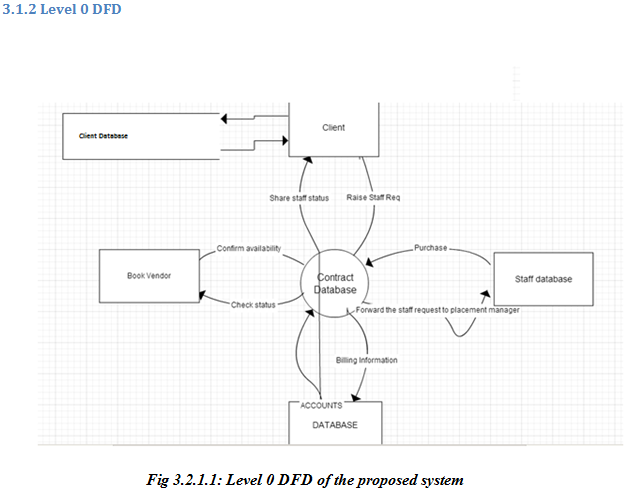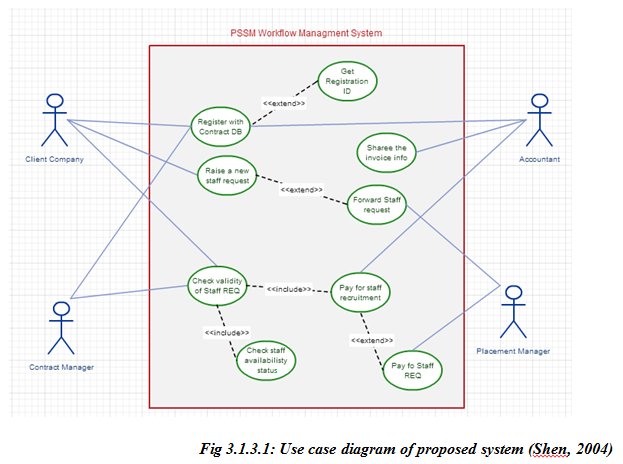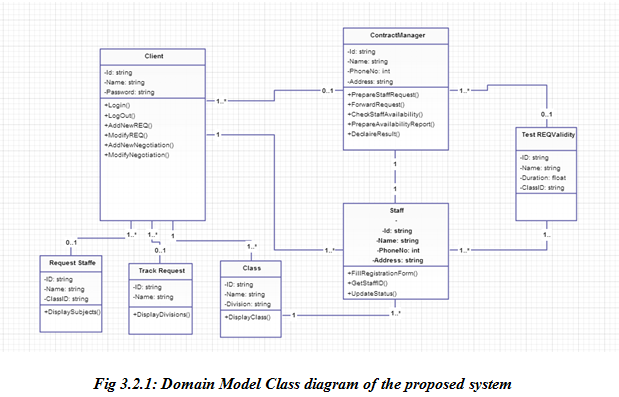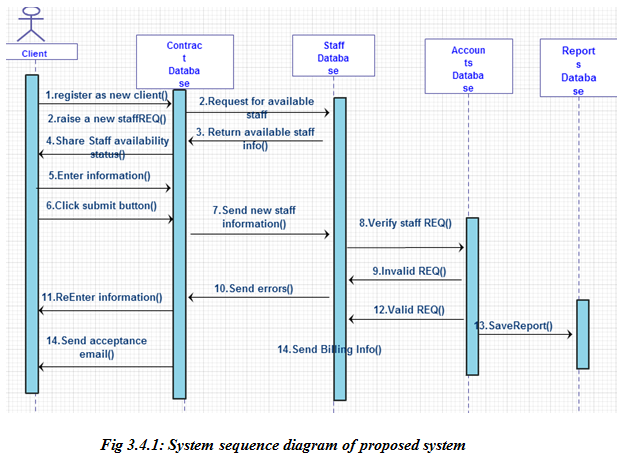Introduction to Unified Modeling Language (UML)
Question:
In the report format used in CQUniversity (refer to Help section below for a link to the report guide), explain how you would complete the following modelling tasks. The report presentation including the references and appendices will be awarded 10 marks. You are to develop the report having each task clearly numbered together with your answer. You are also expected to write an introduction and conclusion for this report. In performing the following tasks, you have to strictly follow all diagramming rules used in the text for this course. In each task, please feel free to make any assumption necessary for the readers. The explanation of your assumptions can help the readers to understand what you have considered differently but as important criteria in producing your model. You are assigned a role to develop a new system based on the project case study. Draw a context diagram and a level-0 DFD for it. Draw a use case diagram by using the Level-0 DFD that you provided in Task 1. Note: Your use case diagram directly relates to the information in Level-0 diagram, but it will also relate to the same system presented as in the context diagram. Develop a domain model class diagram for the system based on the project case study. Develop an activity diagram for the scenario. Using the Activity Diagram above, produce a system sequence diagram, i.e. only include two swimlanes – one for the actor (PSSM employee) and the other for the entire system as a system class object.
The Unified Modeling Language (UML) is a generally valuable showing vernacular in the field of programming planning, which is expected to give a standard methodology to picture the arrangement of a system. It was made and made by Grady Booch, Ivar Jacobson and James Rumbaugh at Rational Software in the midst of 1994–95 with further headway drove by them through 1996.
In 1997 it was held onto as a standard by the Object Management Group (OMG), and has been administered by this relationship starting there and into the future. In 2000 the Unified Modeling Language was also recognized by the International Organization for Standardization (ISO) as a confirmed ISO standard. Starting there and into the future it has been incidentally revised to cover the latest redesign of UML.
The Unified Modeling Language (UML) offers an approach to envision a framework's design outlines in a graph (see picture), including components, for example, Any exercises (occupations) Singular segments of the framework. Furthermore how they can cooperate with other programming parts.
- How the framework will run
- How substances cooperate with others (parts and interfaces)
- Outer client interface
Despite the fact that initially proposed exclusively for article situated outline documentation, the Unified Modeling Language (UML) has been reached out to cover a bigger set of configuration documentation (as recorded above), and been discovered helpful in numerous connection.
Displaying of any building framework assumes a pivotal part in assessing the general execution of the relating framework, as the last yield of the framework or items relies on upon the level of configuration measures emulated. By and large displaying procedures are produced as a piece of framework plan over the whole item life cycle improvement process and rest of the execution, testing and arrangement of the individual framework absolutely relies on upon the demonstrating philosophy emulated (Wandeler, 2006). To assess the demonstrating and outline strategies, a case with Professional and Scientific Staff Management (PSSM) is considered, where the center business goal of the association is to give makeshift staffing administrations.
History and Development of UML
PSSM gives the staffing administrations on contract premise to numerous organizations from different divisions like Oil and Gas and the uniqueness of the association is that, it can give staffing administrations to any sort of industry, which incorporates specialized, non specialized and investigative staff parts. As detailed extensive variety of staff are constantly accessible with PSSM whom incorporate from an every day work to machine administrator, astrophysicists and geologists also. In this way in this connection, to deal with all the center business and authoritative exercises, PSSM is as of now utilizing a normal programming or framework which can be gotten to by the persons or parts like PSSM customers, representatives, contract directors and position chiefs.
System architecture
Existing architecture
As mentioned, PSSM is currently using typical workflow management software to manage the business activities across its departments and the primary architecture followed over the system is as discussed below
- Client Company is the main entity that plays a significant role over the PSSM workflow management system, where the respective company determines its professional or scientific staffing requirements with the organization.
- A typical staffing request will be raised by the client against the existing negotiation terms with PSSM, where the request is forwarded to the contract manager of the organization
- Each and every contract request is tracked with a unique contract ID and now the respective contract manager enters the ID into contracting database.
- Based on the information fetched from database against the unique contract ID, contract manager will evaluate the required terms and conditions of the contract and tests the validity of the request
- If the staffing request is valid, respective professional or scientific staff are provided with the negotiated fees as per the contract, else the contract is returned to the client seeking more information from the client
- Once the contract is marked as valid it is forwarded to staffing request database and marked as outstanding request and then forwarded to the placement department of PSSM
- Based on the staffing request, now the placement department will check the database against the request, where the key attributes of the request like type of staff, experience and qualification are matched with the existing staff database
- When one or more records are fetched from the staff database against the staffing constraint imposed, respective staff (he or she) are marked with the status “reserved”.
- If there is no record found with the respective staffing request, a typical memo is created regarding the unavailability of staff and forwarded to the contract manager. All the pending staffing requests are forwarded to the arrangements department
- Employees who are temporarily available are contacted towards the pending staffing request. Once the agreement is successful with the corresponding employee or staff, respective contract is marked with the status “placed”
- Staffing request, “unable to fill” memo and placement fee bill are forwarded to the contract manager against the status fetched from the placement database and filed over the contract office
- Once the staffing request is failed completely, the corresponding status is updated to the client.
- Accounting is another important entity over the existing system used across PSSM, where the typical billing cycle completes within a month and the respective payments are made via a credit card or cheque or customer account.
Above are the key features of the existing PSSM workflow and few potential issues are identified across the workflow and they are as listed
- Existing database has few constraints like only one employee can access the records at a single point of time, which raises bottleneck issues
- There are duplication issues with electronic and paper records and it would become difficult to manage
- Placement success rates are not tracked effectively and even a proper reporting structure is missing with the current system (Tegarden, 2012)
Principle objective of the proposed framework is evacuate the issues with the current framework like paper and copy records and to keep up all the position records by killing the excess. In this manner in this connection another computerized data framework is obliged to track all the business, authoritative and work process administration exercises, where the obliged demonstrating and configuration perspectives are as examined in the beneath segment.
Proposed system and data modelingArchitecture of existing system and the corresponding issues with the system are discussed in the above section. As per the proposal of PSSM it is clear that, they are in need of much redundant system and the main aim is to automate the entire information system and streamline all the features of the existing workflow management system. Thus to model the required system, data modeling and object modeling techniques are followed and they are as discussed below
Data Flow diagram
Data flow diagram is used to evaluate the complete data flow of the system and the required context diagram and Level 0 diagram are as discussed below

Context diagram of the proposed workflow management system of PSSM is shown in the above figure. In general context diagram is used to evaluate the key functionalities and the relation among the entities of the system. From the above figure it is clear that, there are many automated processes over the proposed system and the initial process starts with client company registration. A separate client database is maintained in this context and the corresponding clients can search and raise the request for staffing services using their computer or mobile as shown in the above figure. Respective staffing requests are tracked and accessed via the contracting database, where the validity of the request is processed as shown.
Based on the validity of the request, corresponding process is initiated, where if the request is valid it is forwarded to staff database, else unavailability of the request is communicated to the client via an email as shown in the above context diagram. From the staff database corresponding staff are inquired about their availability of the contract and the corresponding job is assigned by the placement department and the respective details are maintained at the staff database and reporting database. Accounts department holds the responsibility of generating the invoice for every staff request and forwards the same to the contract manager. Overall reports of the staff requests and clients are maintained across the reporting database as shown in the above context diagram.

High level and Level 0 DFD (Data Flow Diagram) is shown in the above figure and there are four important databases like contract database, client database, staff database and accounts database. Interactions among the respective database components are represented with the arrow marks, where the entire flow of data across various entities like client, contract manager, placement department and accounts department is also shown. Flow of the data among these entities is similar to the flow as explained in the context diagram, where the key database functionalities include share staff availability status, forward staff request, billing information, check staff availability and register clients.
Use Case DiagramUse case diagram derived from the level 0 DFD diagram of the proposed system is as shown below

Domain Model Class diagram
Domain model class diagram is used to evaluate the objects required over modeling the proposed system and the corresponding functionalities, methods and communication patterns and the respective diagram is as shown below

Domain model class diagram of the proposed system is as shown above and it is clear that four important domain classes are identified in this context. Client, Contract manager, Staff and TestREQValidity are the important object designed over the domain class diagram modeling and the subclasses include RequestStaff, TrackRequest and Class and the corresponding attributes and methods are also shown in the above class diagram.
Activity DiagramActivity diagram is used to track and model all the possible activities of a system and the corresponding activity diagram of the proposed workflow management system of PSSM is as shown below

Activity diagram of the proposed system is as shown in the above figure and it is clear that the key important activities against the entire workflow management are identified and given in the above diagram. Client Company, contract manager/contract database, staff database or placement department and account departments are the core basis of the activities of the proposed system.
System sequence diagram is used to model the sequence of action or functionalities of any software system and the respective sequence diagram of the proposed system is as shown below

System sequence diagram of the proposed workflow management system is shown in the above figure and it is clear that the sequence of actions are initiated from client and the flow continues across the entities like contract database, staff database, accounts database and reports database (Bresciani, 2004).
References
- Dennis, A, Wixom, D, Tegarden, D (2012), Systems analysis design, UML version 2.0: an object oriented approach, John Wiley & Sons, New Jersey.
- Ernesto Wandeler, (2006). System architecture evaluation using modular performance analysis: a case study. International Journal on Software Tools for Technology Transfer. 8 (6), pp.16-23
- Hui Shen, (2004). Integration of business modelling methods for enterprise information system analysis and user requirements gathering. Computers in Industry. 54 (3), pp.18-22
- Paolo Bresciani, (2004). Tropos: An Agent-Oriented Software Development Methodology. Autonomous Agents and Multi-Agent Systems. 8 (3), pp.116-123
- Kay, R 2002, Quick Study: System Development Life Cycle.
- Weimer, D & Vining, A. (2005), Policy Analysis: Concepts and Practice(Fourth ed.). Upper Saddle River, NJ: Pearson Prentice Hall. ISBN 0-13-183001-5.
- Ambler, S.W. (2011), Examining the Agile Manifesto.
- Flouris, G & Lock, D (2009), Managing Aviation Projects from Concept to Completion, Ashgate Publishing, Ltd.
- Booz, Allen & Hamilton (2011) , Earned Value Management Tutorial Module 2: Work Breakdown Structure, Office of Science, Tools & Resources for Project Management, science.energy.gov.
To export a reference to this article please select a referencing stye below:
My Assignment Help. (2015). Unified Modeling Language (UML) Essay: Overview, Working & Applications.. Retrieved from https://myassignmenthelp.com/free-samples/modeling-of-professional-and-scientific-staff-management.
"Unified Modeling Language (UML) Essay: Overview, Working & Applications.." My Assignment Help, 2015, https://myassignmenthelp.com/free-samples/modeling-of-professional-and-scientific-staff-management.
My Assignment Help (2015) Unified Modeling Language (UML) Essay: Overview, Working & Applications. [Online]. Available from: https://myassignmenthelp.com/free-samples/modeling-of-professional-and-scientific-staff-management
[Accessed 28 April 2025].
My Assignment Help. 'Unified Modeling Language (UML) Essay: Overview, Working & Applications.' (My Assignment Help, 2015) <https://myassignmenthelp.com/free-samples/modeling-of-professional-and-scientific-staff-management> accessed 28 April 2025.
My Assignment Help. Unified Modeling Language (UML) Essay: Overview, Working & Applications. [Internet]. My Assignment Help. 2015 [cited 28 April 2025]. Available from: https://myassignmenthelp.com/free-samples/modeling-of-professional-and-scientific-staff-management.
